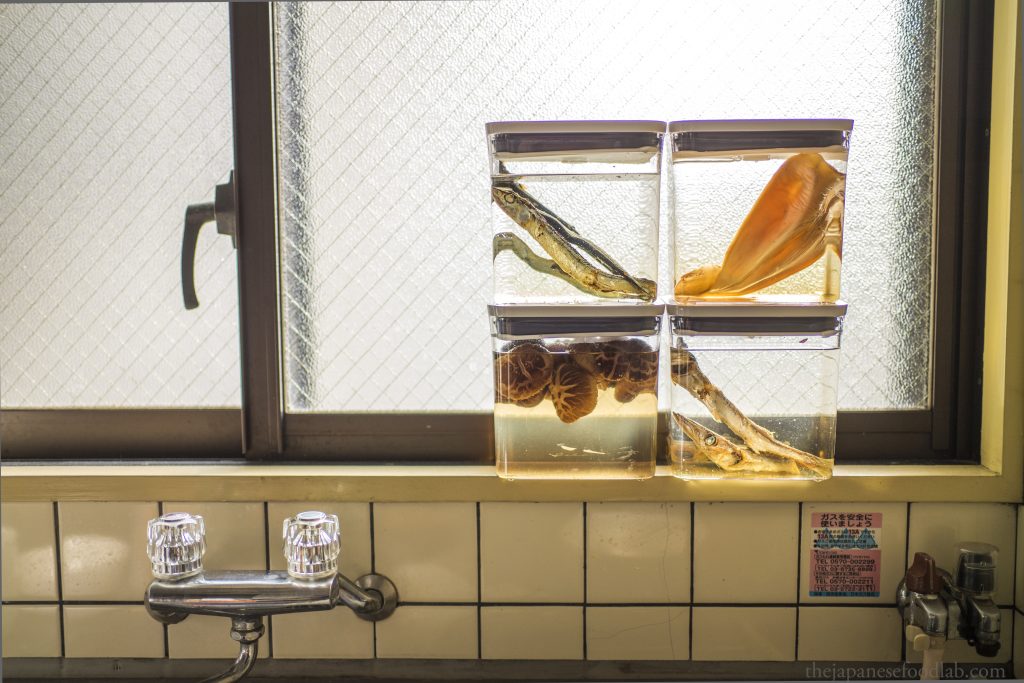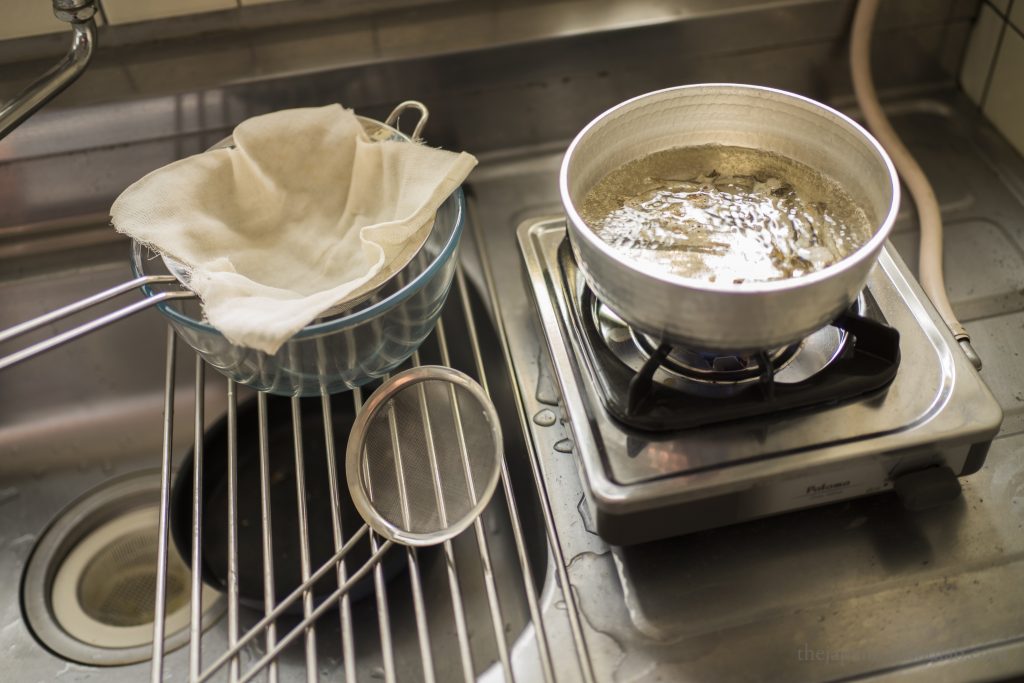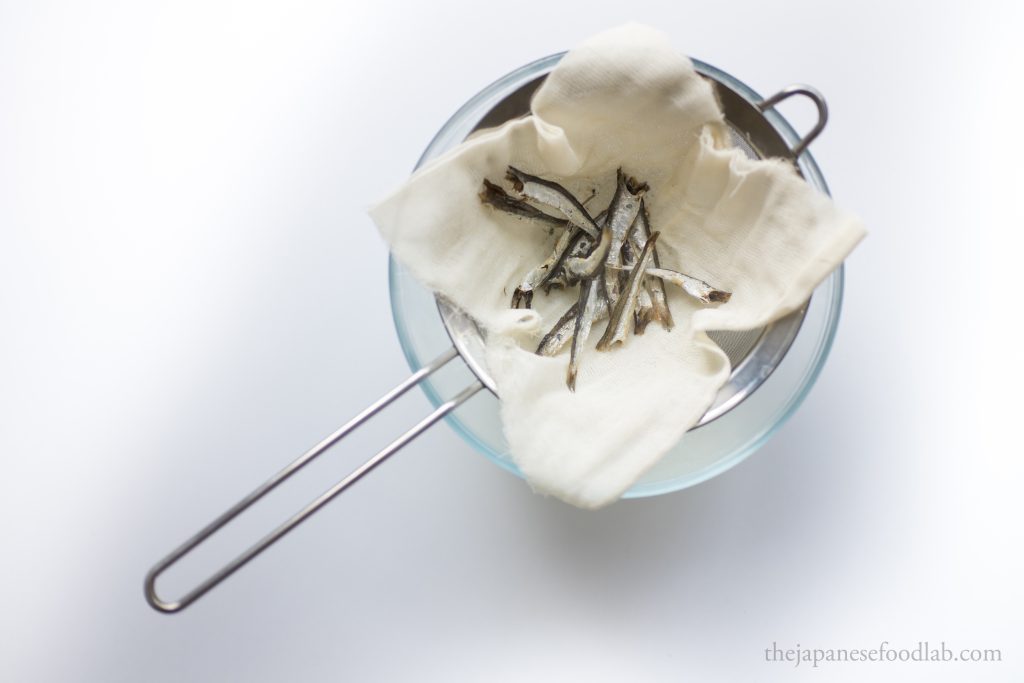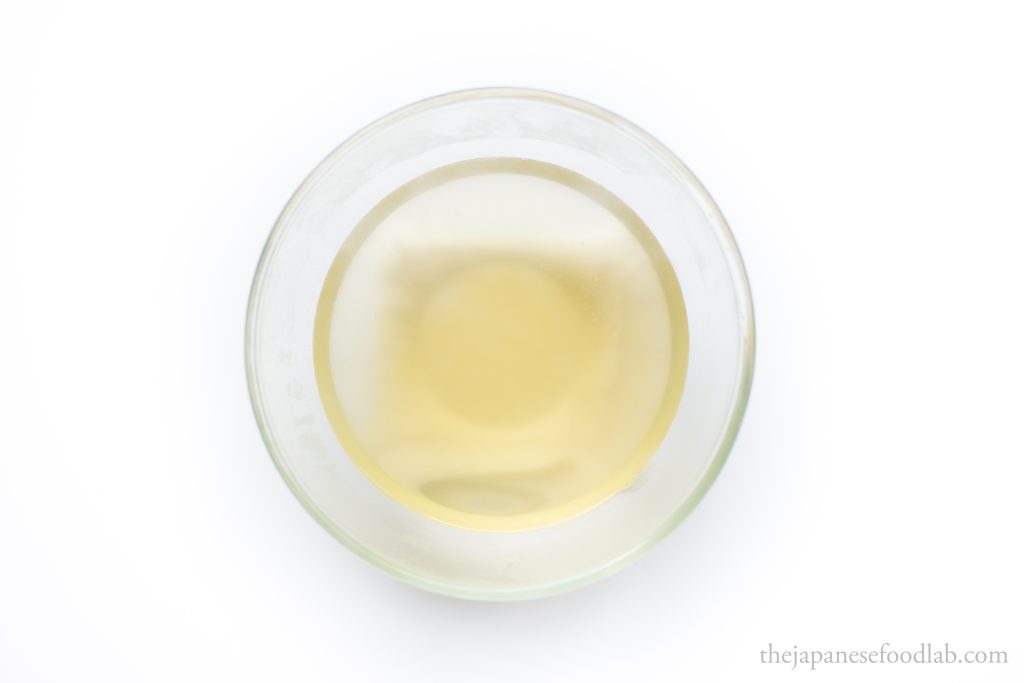
Now that we’ve seen how to prepare niboshi, we can now begin to make dashi stock. Both niboshi, katsuobushi and other kinds of bushi follow the same ratio of 30g of ingredients to 1 litre of water. Sometimes if we feel like having a stronger dashi we go with 40g, but 30g is usually the go to amount. One aspect of this that is open to interpretation when it comes to niboshi is 30g of dried fish including the heads and guts that are usually discarded, or 30g after the niboshi has been prepared. To us, we like to err on the side of a stronger stock and so recommend 30g after all preparation has been done. So if using whole fish, that’s 30g of whole fish, and if discarding the heads, innards and stomach flesh of the fish, you’d need to weigh out more than 30g of whole fish and you’d expect some weight loss after preparation.
There are three basic ways in which to prepare niboshi dashi, each with slightly different results elaborated on below. The dashi created from each one maintains its quality for 1 week in the fridge or 3 months in the freezer, after which it starts to lose quality.
Cold Brew Niboshi Dashi Recipe
The cold brew method (水出し法) is fairly hands off but takes a much longer time to make. The upside is that it creates a much lighter stock.
30g of niboshi (see preparation steps)
1 litre of water
In a pan, add 1 litre of water and 30g of niboshi. Cover with a lid or cling wrap and refrigerate overnight or up to 12 hours. Strain out the dashi using a strainer or colander lined with muslin cloth. The dashi is ready to use.
It’s important to keep the dashi refrigerated as you make it, as it can quickly go bad at room temperature. However, covering it is equally as important to prevent the dashi from absorbing the taste of the fridge as well as quickly oxidising by absorbing oxygen. We also prefer the taste of cold brew niboshi dashi made from niboshi that have had their guts removed. After 12 hours, the dashi starts to taste a little over extracted, becoming slightly more fishy than we’d like. To us, the sweet spot is around 8 hours.

Simmered Niboshi Dashi Recipe
Making niboshi dashi by simmering (煮出し法) is the most common technique and yields a rich dashi that is good for soup and stews. The recipe uses the same 30 g of niboshi to one litre of water.
Start by adding the 30 g of niboshi to one litre of water in the pan and allow it to soak at room temperature for 30 minutes covered. Bring the pan up to a simmer until you can see bubbles just starting to emerge from the bottom of the pot. Turn down the heat to as low as it will go and hold it for four to five minutes. During this time you will start to notice bubbles and scum accumulate on the surface. Using a strainer, skim off any of the excess scum or oil which will cause the stock to go cloudy or impact a bitter taste. Once done, strain the dashi stock through a fine mesh strainer line with muslim cloth. The dashi is ready to use.

We recommend soaking the niboshi for at least 30 minutes before simmering it, however if time does not permit simply use it directly. You only need to simmer it for four to five minutes to make a standard dashi, though it is possible to go up to 20 minutes to fully extract the flavour. Any longer and the fishy taste will start to be extracted from the niboshi. Some sources recommend a combined method of cold soaking the niboshi following the instructions above and then simmering it in the same liquid. Give it a go and adjust to taste.
Sous vide Niboshi Dashi Recipe
Lastly, you have the modern techniques introduced by ramen-enthusiasts that recommend Niboshi be held at a constant temperature between 70 to 80°C that create the purest expression of Niboshi dashi, though it can be fiddly or expensive without the required set-up. This is usually done in a sous vide machine, with some people using a ziploc bag instead of a vacuum bag.
Add 30g of niboshi and 1 litre of water into a vacuum bag and seal. Submerge in a sous vide machine set at 80°C for 1 to 2 hours, longer if you want a stronger stock. Strain through a strainer lined with muslin cloth. The dashi is ready to use.

For much larger restaurant sized amounts, you can actually do this in a large pot over a stove, though it has to be constantly monitored with a thermometer to keep the temperature within the required range. We’ve found it much easier to do on the stove for larger quantities of dashi, but much harder for smaller amounts. If you know your stove well and have a feel for how much heat is lost from your pot over time and how strong your heat source is, then the task becomes much easier.